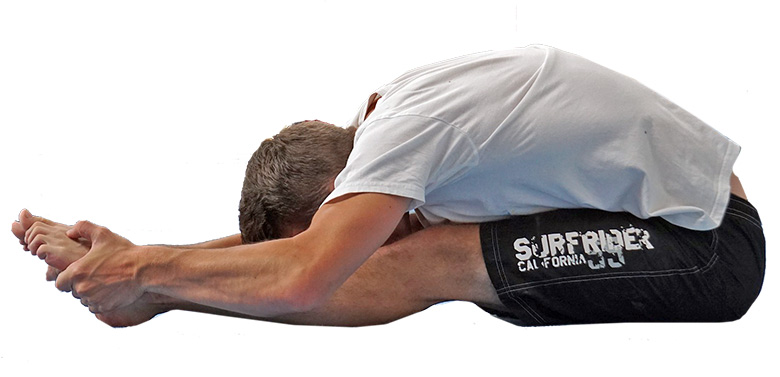Sit and Reach Flexibility Test Instructions
The sit and reach test measures the flexibility of your hamstrings and lower back.
Requirements
You will need a sit and reach measurement apparatus (alternatively a step and ruler can be used). You will also need an assistant to monitor the correct technique and record the results.

Procedure
- Perform a warm-up.
- Remove shoes and socks.
- The participant sits on the floor with legs stretched out straight ahead, with the soles of the feet flat against the box or step.
- Both knees should be locked and pressed flat to the floor.
- The hands are place one on top of the other, with the palms facing downwards.
- Reach forward with a slow and steady movement as far as possible, and hold that position for two seconds while the distance is recorded.
- Record the best score of three attempts.
Video Example
Notes
- Ensure that the hands remain at the same level, not one reaching further forward than the other.
- To stop the legs bending, the assessor may assist by placing their hand above the knees and holding them down.
- This is just an example test protocol of the sit and reach test. There are several other common variations of this test, mostly variations in the way that it is measured (different zero point).
- The test is sometimes performed without a warm-up. If so, it is important to follow the same procedure for any repeat tests.
What is a Good Score?
Usually the level of the toes is set at zero, so a negative score is when the participant cannot reach their toes, and any positive score is how far past the toes they can reach. A score of zero is average. See the tables below for ratings for men and women.
Men
| (cm) | (inches) | |
| super | > +27 | > +10.5 |
| excellent | +17 to +27 | +6.5 to +10.5 |
| good | +6 to +16 | +2.5 to +6.0 |
| average | 0 to +5 | 0 to +2.0 |
| fair | -8 to -1 | -3.0 to -0.5 |
| poor | -20 to -9 | -7.5 to -3.5 |
| very poor | < -20 | < -7.5 |
Women
| (cm) | (inches) | |
| super | > +30 | > +11.5 |
| excellent | +21 to +30 | +8.0 to +11.5 |
| good | +11 to +20 | +4.5 to +7.5 |
| average | +1 to +10 | +0.5 to +4.0 |
| fair | -7 to 0 | -2.5 to 0 |
| poor | -15 to -8 | -6.0 to -3.0 |
| very poor | < -15 | < -6.0 |
* source: topendsports.com
Sit and Reach Test Variations
- The zero mark on the traditional sit and reach test is at the feet, though some protocols have 15 or 23cm the feet level. The modified sit and reach test adjusts the zero mark is adjusted based on the participant's arm length.
- The Back-Saver Sit and Reach tests the flexibility of one leg at a time.
More Information
see other fitness test protocols
